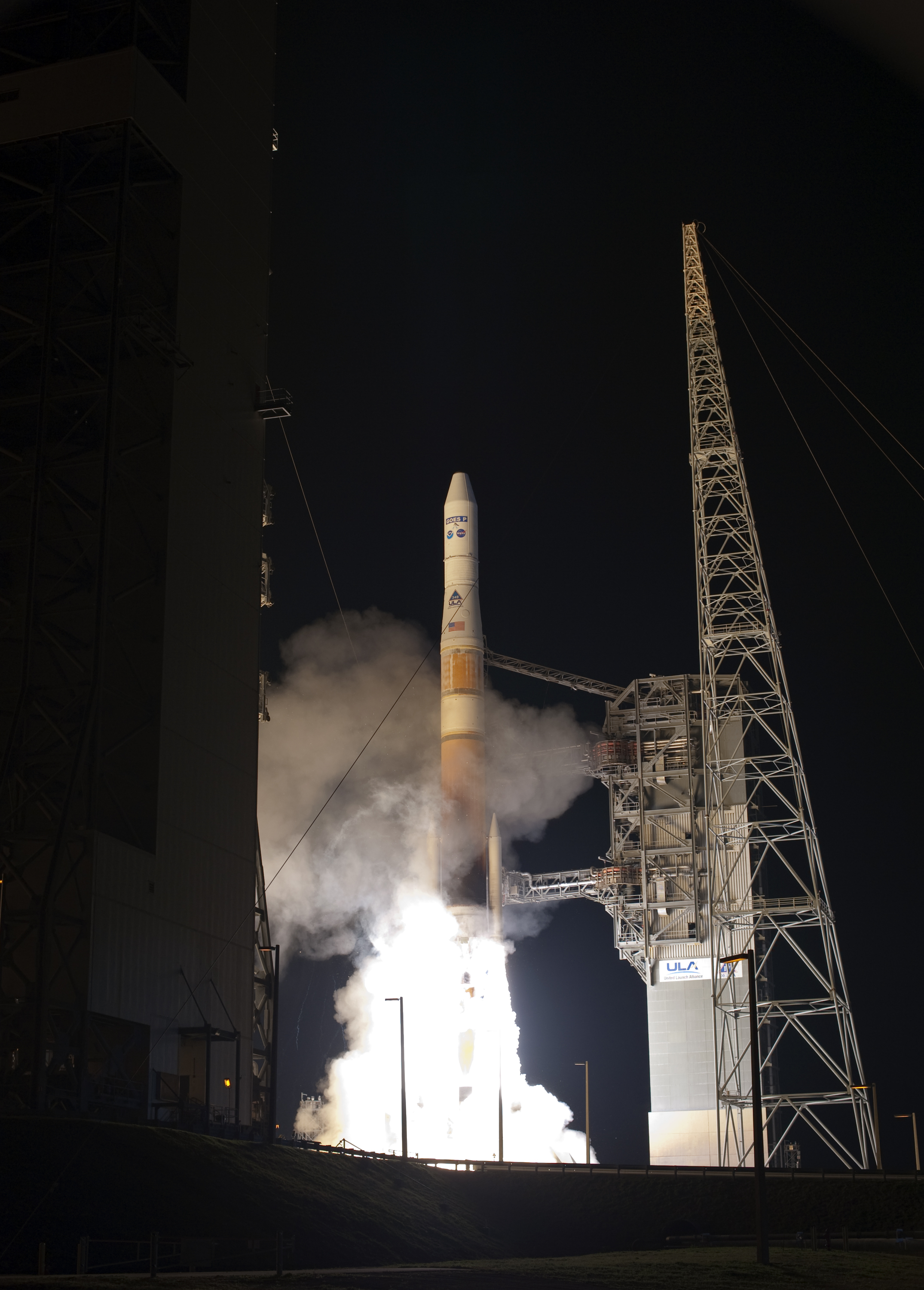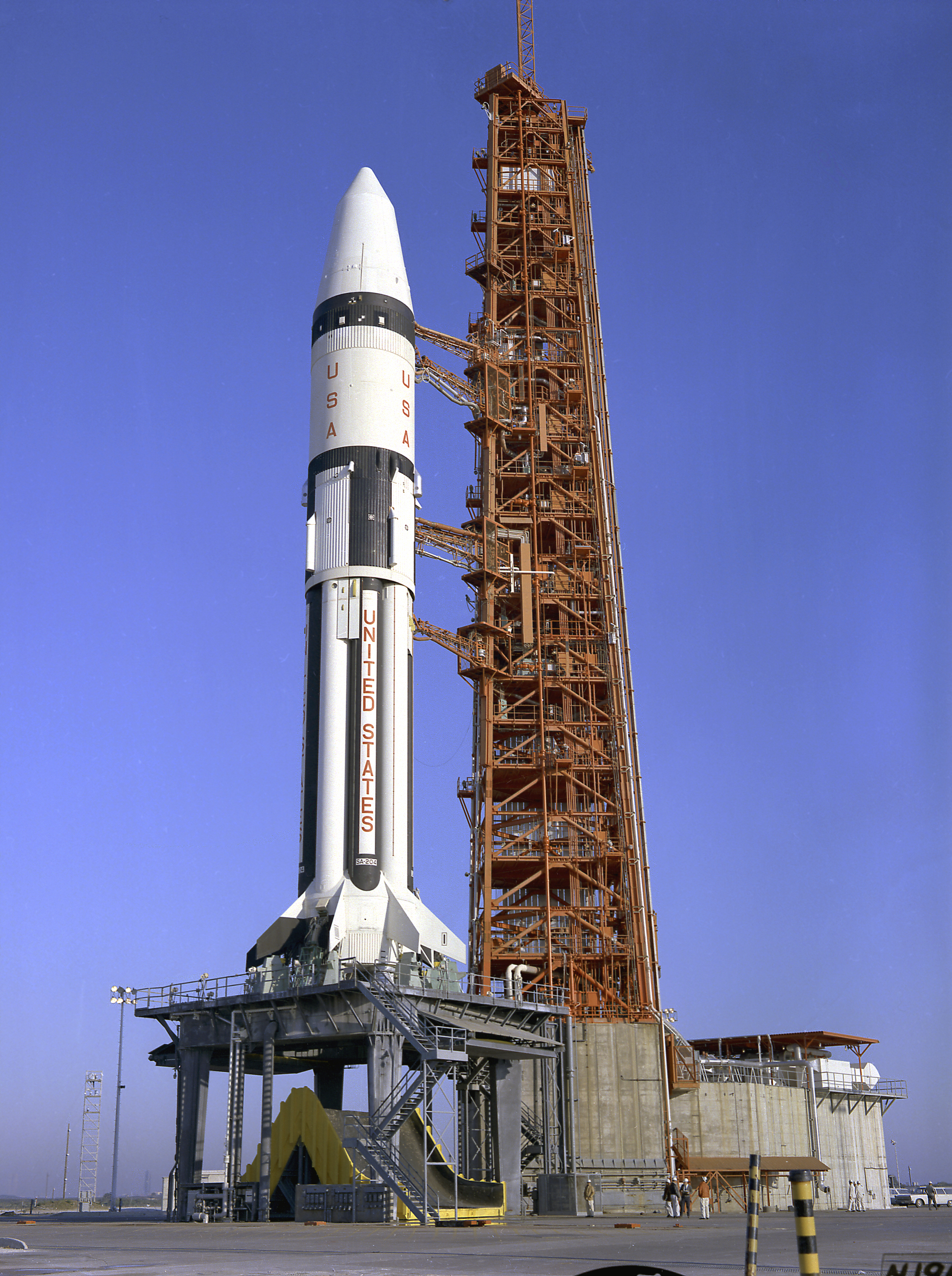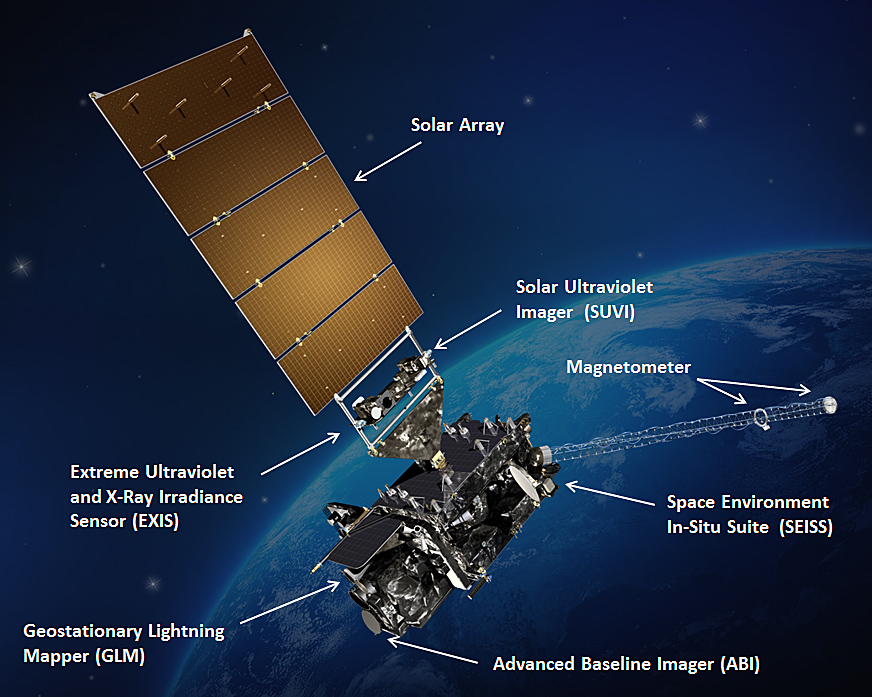|
GOES-15
EWS-G2 (Electro-optical Infrared Weather System Geostationary) is a weather satellite of the U.S. Space Force, formerly GOES-15 (also known as GOES-P before becoming operational). The spacecraft was constructed by Boeing, and is the last of three GOES satellites to be based on the BSS-601 bus. It was launched in 2010, while the other BSS-601 GOES satellites—GOES-13 and GOES-14—were launched in May 2006 and June 2009 respectively. It was the sixteenth GOES satellite to be launched. Launch GOES-15 was launched atop a Delta IV-M+(4,2) rocket flying from Space Launch Complex 37B at the Cape Canaveral Air Force Station. The launch occurred at 23:57 UTC on 4 March 2010, forty minutes into a sixty-minute launch window. Upon reaching geostationary orbit on 16 March, it was redesignated GOES-15. On 6 December 2011, it was activated as the GOES-West satellite, replacing GOES-11. Design At launch, the mass of the satellite was . It has a design life of ten years. Power is supplie ... [...More Info...] [...Related Items...] OR: [Wikipedia] [Google] [Baidu] |
GOES-17
GOES-17 (designated pre-launch as GOES-S) is an environmental satellite operated by the National Oceanic and Atmospheric Administration (NOAA). The satellite is second in the four-satellite GOES-R series (GOES-16, -17, - 18, and - 19). GOES-17 supports the Geostationary Operational Environmental Satellite (GOES) system, providing multi-spectral imaging for weather forecasts and meteorological and environmental research. The satellite was built by Lockheed Martin, based on the A2100A platform, and expected to have a useful life of 15 years (10 years operational after five years of standby as an on-orbit replacement). GOES-17 is intended to deliver high-resolution visible and infrared imagery and lightning observations of more than half the globe. The satellite was launched on 1 March 2018 and reached geostationary orbit on 12 March 2018. In May 2018, during the satellite's testing phase after launch, a problem was discovered with its primary instrument, the Advanced Baseli ... [...More Info...] [...Related Items...] OR: [Wikipedia] [Google] [Baidu] |
GOES 13
EWS-G1 (Electro-optical Infrared Weather System Geostationary) is a weather satellite of the U.S. Space Force, formerly GOES-13 (also known as GOES-N before becoming operational) and part of the National Oceanic and Atmospheric Administration's Geostationary Operational Environmental Satellite system. On 14 April 2010, GOES-13 became the operational weather satellite for GOES-East. It was replaced by GOES-16 on 18 December 2017 and on 8 January 2018 its instruments were shut off and it began its three-week drift to an on-orbit storage location at 60.0° West longitude, arriving on 31 January 2018. It remained there as a backup satellite in case one of the operational GOES satellites had a problem until early July 2019, when it started to drift westward and was being transferred to the U.S. Air Force, and then the U.S. Space Force. GOES-13 arrived at 61.5° East longitude in mid-February 2020. The satellite was renamed EWS-G1 and became fully operational over the Indian Ocean ... [...More Info...] [...Related Items...] OR: [Wikipedia] [Google] [Baidu] |
Cape Canaveral Air Force Station Space Launch Complex 37
Space Launch Complex 37 (SLC-37), previously Launch Complex 37 (LC-37), is a launch complex on Cape Canaveral Space Force Station, Florida. Originally built to support the Apollo program, the complex consists of two launch pads: LC-37A and SLC-37B. Pad 37A has never been used, while 37B hosted Saturn I and Saturn IB launches in the 1960s as well as Delta IV and Delta IV Heavy launches from 2002 to 2024. Currently, the pad is not officially leased to anyone. However, SpaceX is expected to become the next tenant of SLC-37 for use as a launch site for Starship, so far possessing a limited right of entry and a draft environmental impact statement. History Saturn I and IB (1964–1968) Launch Complex 37 began construction in 1959, being envisioned to be a second site to launch the experimental heavy-lift Saturn rockets, joining Launch Complex 34 (LC-34) to the south. Originally, it was planned to be the launch site for an Earth orbit rendezvous (EOR) strategy to potentially ... [...More Info...] [...Related Items...] OR: [Wikipedia] [Google] [Baidu] |
GOES 11
GOES-11, known as GOES-L before becoming operational, is an American weather satellite, which is part of the US National Oceanic and Atmospheric Administration's Geostationary Operational Environmental Satellite system. It was launched in 2000, and operated at the GOES-WEST position, providing coverage of the west coast of the United States, until December 6, 2011. Launch GOES-L was launched aboard an International Launch Services Atlas IIA rocket, flying from Space Launch Complex 36A at the Cape Canaveral Air Force Station. The launch occurred at 07:07 UTC on 3 May. The launch was originally scheduled for 15 March 1999, however it was delayed to allow the Eutelsat W3 satellite to be launched first. Following this, it was rescheduled for 15 May. On 30 April, the Centaur upper stage of a Titan IV(401)B failed during the launch of USA-143. Since a version of the Centaur was also used on the Atlas II, the launch of GOES-L was delayed a week to ensure that the same problem would ... [...More Info...] [...Related Items...] OR: [Wikipedia] [Google] [Baidu] |
Weather Satellite
A weather satellite or meteorological satellite is a type of Earth observation satellite that is primarily used to monitor the weather and climate of the Earth. Satellites are mainly of two types: polar orbiting (covering the entire Earth asynchronously) or geostationary (hovering over the same spot on the equator). While primarily used to detect the development and movement of storm systems and other cloud patterns, meteorological satellites can also detect other phenomena such as city lights, fires, effects of pollution, auroras, sand and dust storms, snow cover, ice mapping, boundaries of ocean currents, and energy flows. Other types of environmental information are collected using weather satellites. Weather satellite images helped in monitoring the volcanic ash cloud from Mount St. Helens and activity from other volcanoes such as Mount Etna. Smoke from fires in the western United States such as Colorado and Utah have also been monitored. El Niño and its effects on wea ... [...More Info...] [...Related Items...] OR: [Wikipedia] [Google] [Baidu] |
BSS-601
The Boeing 601 (sometimes referred to as the BSS-601, and previously as the HS-601) is a retired communications satellite bus designed in 1985 and introduced in 1987 by Hughes Space and Communications Company. The series was extremely popular in the 1990s, with more than 84 purchased by customers globally. The more advanced 601HP derivative (for "high power") was introduced in 1995. Hughes, and the 601 platforms, were acquired by Boeing in 2000. The last commercial 601 satellite was ordered in 2001 and launched in 2004. The NASA Space Communications and Navigation (SCaN) Program Office in December 2007 selected the BSS-601HP for its third generation TDRS spacecraft, adding the two 15-foot (4.5m) diameter steerable antennas. The TDRS-M satellite, launched on August 18, 2017, became the last 601 satellite to reach orbit. Background The Boeing-601 model was Hughes’ first major design and development for a communications satellite with three-axis, or body stabilization. All pre ... [...More Info...] [...Related Items...] OR: [Wikipedia] [Google] [Baidu] |
GOES 14
GOES-14, known as GOES-O prior to reaching its operational orbit, is an American weather satellite, which is part of the US National Oceanic and Atmospheric Administration (NOAA)'s Geostationary Operational Environmental Satellite (GOES) system. The spacecraft was built by Boeing and is based on the BSS-601 bus. It is the second of three GOES satellites to use the BSS-601 bus, after GOES-13, which was launched in May 2006. It was launched by United Launch Alliance aboard a Delta IV-M+(4,2) rocket at 22:51 UTC on 27 June 2009, from Space Launch Complex 37B at the Cape Canaveral Air Force Station. Upon reaching geostationary orbit, on 7 July, it was redesignated GOES-14. It underwent a 6-month series of post-launch tests before completing its "check-out" phase and then was placed into "orbital storage mode" or stand-by. Its first full disk image was sent on 27 July 2009. GOES-14 was brought out of storage and began one-minute rapid scans of Tropical Storm Isaac on 24 August 20 ... [...More Info...] [...Related Items...] OR: [Wikipedia] [Google] [Baidu] |
Cape Canaveral Air Force Station
Cape Canaveral Space Force Station (CCSFS) is an installation of the United States Space Force's Space Launch Delta 45, located on Cape Canaveral in Brevard County, Florida. Headquartered at the nearby Patrick Space Force Base, the station is the primary launch site for the Space Force's Eastern RangeCAST 1999, p. 1-12. with four launch pads currently active (Space Launch Complexes 36, 40, 41 and 46). The facility is south-southeast of NASA's Kennedy Space Center on adjacent Merritt Island, with the two linked by bridges and causeways. The Cape Canaveral Space Force Station Skid Strip provides a runway close to the launch complexes for military airlift aircraft delivering heavy and outsized payloads to the Cape. A number of American space exploration pioneers were launched from CCSFS, including the first U.S. Earth satellite (1958), first U.S. astronaut (1961), first U.S. astronaut in orbit (1962), first two-man U.S. spacecraft (1965), first U.S. uncrewed lu ... [...More Info...] [...Related Items...] OR: [Wikipedia] [Google] [Baidu] |
Solar Panel
A solar panel is a device that converts sunlight into electricity by using photovoltaic (PV) cells. PV cells are made of materials that produce excited electrons when exposed to light. These electrons flow through a circuit and produce direct current (DC) electricity, which can be used to power various devices or be stored in battery (electricity), batteries. Solar panels are also known as solar cell panels, solar electric panels, or PV modules. Solar panels are usually arranged in groups called arrays or systems. A photovoltaic system consists of one or more solar panels, an solar inverter, inverter that converts DC electricity to alternating current (AC) electricity, and sometimes other components such as charge controller, controllers, Measuring instrument, meters, and solar tracker, trackers. Most panels are in solar farms or Rooftop solar power, rooftop solar panels which grid-connected photovoltaic system, supply the electricity grid. Some advantages of solar panels are ... [...More Info...] [...Related Items...] OR: [Wikipedia] [Google] [Baidu] |






